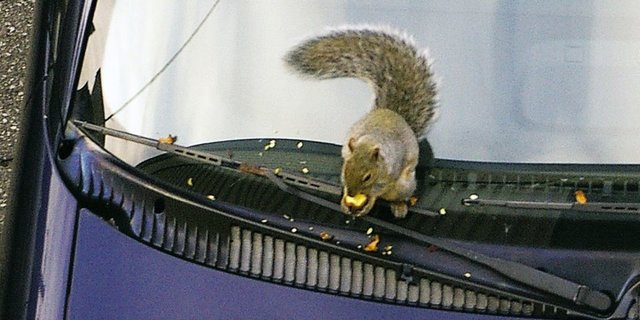Especially in winter, your car is the perfect place for a four-legged critter to keep warm
If there’s anything worse than hearing or seeing a four-legged denizen scurrying out of your vehicle, it’s getting a repair estimate after you had your ride towed there, because it wouldn’t start. And now, there’s a new fly in the ointment — some carmakers are turning to recycled organic matter for certain components and materials used in crafting their wares.
There’s a wide variety of our natural neighbours that can wreak havoc on our transports, ranging from field mice, chipmunks, and small rodents, all the way up to porcupines and raccoons. They’re primarily looking for shelter and food, and their damage can be minor — even funny, such as packing an engine full of chestnuts. It can also be outright dangerous, as when brake and fuel lines are chewed through.
Sometimes, the problems caused are easily detected and repaired, and other times, a wiring harness chase is needed, running up large labour fee charges. Unfortunately, most drivers only think about taking some preventative actions after an initial invasion and its dollar consequences.
Don’t rest easy on history. Disruptions and changes to nearby habitats can turn a sleepy, unbothered garage into a vehicle feast venue overnight. But a quick check on your ride’s parking area and its interior can eliminate a lot of risk without any hassle. Storing any type of food source in a garage is a no-no; bulk pet food, for example, is an open invitation to the beast buffet.
Vehicle interiors can be equally appealing, with food crumbs and wrapper remnants. Perhaps the biggest lure can be found under a child-seat, but any ride that’s been through a drive-thru food lane can be contaminated. And it’s not only food items that can attract unwanted guests, either. Any source of usable fiber for nest making such as textiles, cardboard boxes or leftover home insulation can be an attraction and then used to create intricate dens under the hood or in undercarriage nooks.
If you’ve been the victim of some critter chaos, it may be time to take some preventative measures other than cleaning up your automotive act. There are commercially made spray products and powders to ward off critters, and Honda has started marketing pepper-infused general utility tape to protect wiring harnesses and liquid lines.
A homemade remedy — that’s just as effective as any consumer product — is a mix of aromatic peppermint oil mixed with warm water. Mix it in an 8:1 water-to-oil ratio, and then spray it under the hood, in the cargo area, and under seats and the dash. Be cautious with regards to material stains, though, by testing the spray first in a hidden area and using it lightly in general. Don’t soak anything to the drip point, but lightly mist surfaces. A good spray is generally effective for about a month.
Finally, if you’ve seen any larger creatures skulking around your vehicle, give the hood a loud slap before hitting the ignition. The clean-up bill you’ll avoid doing this can easily pay for a month of drive-thru meals.





